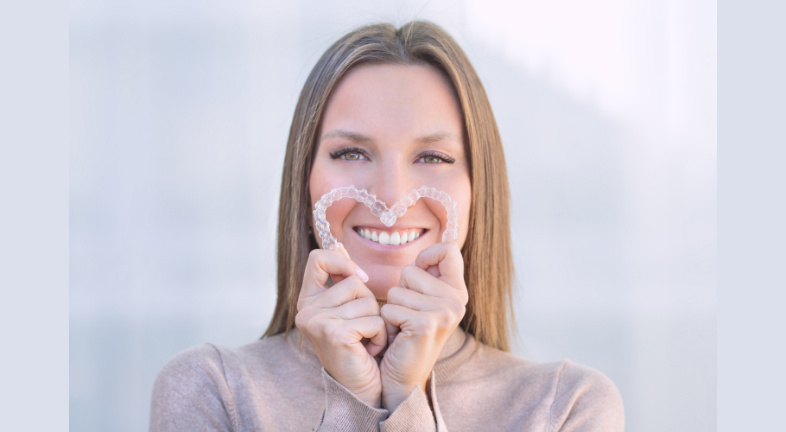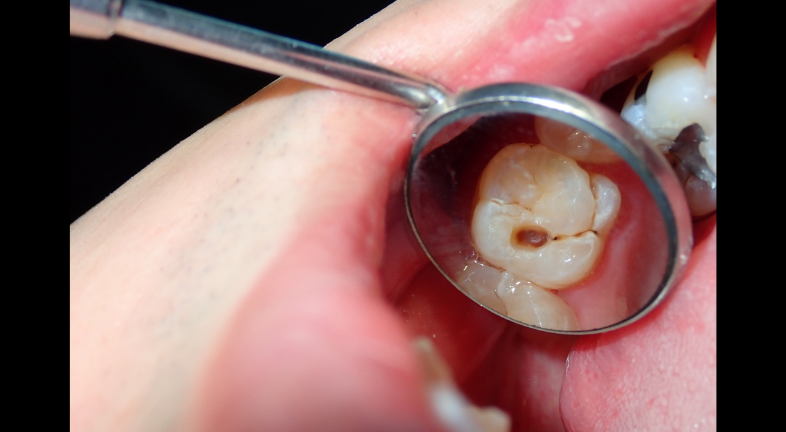
Table of Content
Hey there! In the world of dental care, technology is advancing at a rapid pace, bringing new and exciting ways to improve your oral health. From innovative treatments to digital solutions, these trends are making dental care more efficient, accessible, and effective. Whether you're looking to maintain your pearly whites or need some serious dental work, these tech trends are here to help. Let's dive into the top five dental tech trends that are transforming oral health care in the UK.
One of the most significant advancements in dental care is teledentistry. This modern trend is revolutionizing how we access dental services, especially in times when visiting a dentist in person can be challenging. Teledentistry uses digital communication tools to provide dental consultation, diagnosis, and treatment planning remotely.

Teledentistry involves using video calls, online chat, and digital imaging to connect patients with dental professionals. You can discuss your dental concerns, share photos or X-rays of your teeth, and receive professional advice without leaving your home. This is particularly beneficial for routine check-ups, minor dental issues, or follow-up consultations.
Teledentistry is ideal for non-emergency situations, such as:
For severe dental emergencies, you should still visit a dentist in person.

Another exciting trend in dental technology is the rise of remote clear aligner treatments from brands that offer at-home teeth straightening. These treatments offer a convenient and discreet way to straighten your teeth without frequent visits to the orthodontist. Let’s explore how Caspersmile and similar brands are changing the game.
A remote clear aligner treatment allows you to straighten your teeth at home. After an initial consultation, you receive a set of custom-made clear aligners that gradually move your teeth into the desired position. The best part? Most of the process is done remotely, with regular virtual check-ins to monitor your progress. This has been made possible by brands like Caspersmile priced only at £625.
Caspersmile is suitable for many people with mild to moderate teeth alignment issues. However, more complex cases may still require traditional braces or in-office orthodontic treatments. Consult with a dental professional to determine the best option for your needs.
Gone are the days of uncomfortable, goopy dental moulds. Digital impressions are taking over as a more accurate and comfortable alternative. This technology uses digital scanners to create precise 3D images of your teeth and gums, streamlining various dental procedures.

During a digital impression procedure, your dentist uses an intraoral scanner to capture detailed images of your teeth. The scanner is a small, handheld device that quickly and painlessly scans the inside of your mouth. The images are then used to create a digital model of your teeth, which can be used for various purposes, including:
Digital impressions are used in a variety of dental procedures, including:
One of the most groundbreaking trends in dental technology is 3D printing. This innovative technology is transforming the way dental restorations are made, offering unparalleled precision and efficiency. From crowns and bridges to dentures and implants, 3D printing is making it easier for dentists to provide high-quality, custom-fit solutions for their patients.
3D printing in dentistry involves using digital models to create physical objects. Here's a step-by-step overview of how it works:
3D printing is used in various dental applications, including:
According to Healthline, laser dentistry is another exciting trend that's making dental treatments less invasive and more comfortable for patients. By using focused light beams, lasers can perform a variety of dental procedures with greater precision and less pain.
Dental lasers emit light energy in a focused beam. This energy interacts with the tissue, allowing the dentist to cut, vaporize, or shape the tissue with high precision. There are two main types of lasers used in dentistry: hard tissue lasers and soft tissue lasers.

Laser dentistry can be used for a variety of dental procedures, including:
Artificial intelligence (AI) is making waves in dentistry by improving diagnostic accuracy and enhancing patient care. AI algorithms can analyze vast amounts of data quickly and accurately, assisting dentists in diagnosing and planning treatments.
AI is being integrated into various aspects of dental care, including:
The potential applications of AI in dentistry are vast and continue to grow. Some future possibilities include:

Smart toothbrushes are taking oral hygiene to the next level by integrating technology that ensures you brush more effectively. These advanced toothbrushes come equipped with features like timers, pressure sensors, and Bluetooth connectivity to help you maintain a healthy smile.
Smart toothbrushes use sensors and Bluetooth technology to monitor your brushing habits. They connect to a smartphone app that provides real-time feedback and personalized recommendations. The app can track how long you brush, whether you’re using the right technique, and if you’re applying too much pressure.
When selecting a smart toothbrush, look for features that suit your needs, such as battery life, ease of use, and compatibility with your smartphone.
Jumping on the latest dental tech trends can really boost your oral health and make visits to the dentist easier and more effective. New advancements such as teledentistry, digital impressions, 3D printing, laser treatments, and AI are changing the game. By using these new tools, you can keep your smile healthy and bright. Chat with your dentist about these options and see how they can help you out.




Curated the best for your knowledge
 Aligners for Adults: The Modern Way to Straighten Your Smile
Aligners for Adults: The Modern Way to Straighten Your SmileIf you've ever concealed your smile in photos or refrained from laughing heartily due to misaligned teeth, you are not alone. Many individuals, including mature adults, share this sentiment. Fortunately, you no longer require a mouth full of metal to achieve the smile you have always desired. Today's aligners for adults are slimmer, subtler, and much more effective than ever before. Teeth straightening has become a discreet and adaptable option. These clear trays will slowly shift your teeth from behind the scenes while you continue to live your life as usual. Let's take a look at how teeth straightening for adults works, why it has become so trendy, and which brands, including Invisalign, Caspersmile, and Smile White, are worth considering if you are based in the UK.
Read More Mouth Guards: Types & How They Protect Your Teeth
Mouth Guards: Types & How They Protect Your TeethPeople don’t always think about how easy it is to damage a tooth. One wrong move in a football game, a trip on the pavement, or even just grinding in your sleep, and boom, chipped enamel or worse, a full-on dental emergency. Teeth look solid, but they’re actually pretty fragile when it comes down to it. That’s where a mouth guard comes in. It’s basically a cover for your teeth. Easiest way to picture it? Like a helmet, but for your mouth. It takes the hit, spreads the pressure out, and stops your teeth from smashing against each other. Super simple, but it really does make a huge difference. And no, there isn’t just one kind. You’ve got the cheap store-bought ones, the boil-and-bite kind you mold at home, and then the dentist-made custom ones that fit perfectly. Each has its ups and downs, and we’ll go through them so you know which might actually work for you.
Read More Do Cavities Ever Go Away? Myths vs. Reality
Do Cavities Ever Go Away? Myths vs. RealityCavities, no one can stand them. That sharp, stinging pain in your mouth when trying to enjoy a nice meal can completely ruin your day. Usually caused by a lapse in oral hygiene, cavities can vary greatly in their level of severity. Most remain asymptomatic initially, but almost always grow excruciatingly painful as the decay worsens. Considering how disruptive a cavity can be, it's reasonable to assume that plenty of people wonder, “Can cavities go away?” The answer is a resounding no; you will almost certainly need some sort of treatment once decay has turned into a cavity.
Read MoreQuick Links

Heading